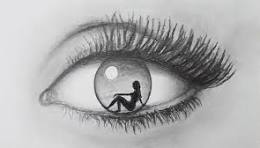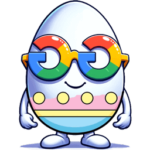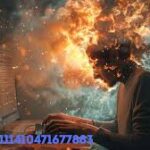Drawing:v04hso9zvvq= art is an intriguing concept that blends creativity with a unique identifier, often seen in digital art circles. This art style is not only about the visuals but also about the context in which it is created. The identifier “v04hso9zvvq” may refer to a specific project, a particular series of artworks, or a coding reference that ties the pieces together under a common theme or methodology. Understanding the roots of this art form requires delving into both the technical and artistic aspects that define it.
The origins of drawing:v04hso9zvvq= art are deeply intertwined with the digital age, where artists use technology not just as a tool but as an integral part of their creative process. This art form represents a fusion of traditional drawing techniques with digital innovation, creating a new genre that appeals to a wide audience. The significance of the name or code associated with this style often lies in its ability to connect the artwork with a broader digital ecosystem, making it accessible and relatable to those familiar with modern technological trends.
As we explore drawing:v04hso9zvvq= art, it becomes clear that this style is not just about the visual appeal but also about the underlying narrative and the connection it creates with the viewer. Whether you are an art enthusiast or a digital art professional, understanding the nuances of this art form can enrich your appreciation and inspire your own creative endeavors. This article will take you through various aspects of drawing:v04hso9zvvq= art, from techniques and themes to its evolution and future prospects.
Table of Contents
The Techniques Behind drawing:v04hso9zvvq= art
Drawing:v04hso9zvvq= art employs a blend of traditional drawing techniques and digital methodologies to create unique and captivating works of art. The foundation of this style often begins with hand-drawn sketches, where artists use pencils, pens, or charcoal to outline their ideas. These initial sketches serve as the groundwork, allowing the artist to explore forms, compositions, and concepts before moving on to the digital stage.
Once the basic structure is established, the artwork is often digitized using high-resolution scanners or directly created on digital tablets. This transition from analog to digital is where drawing:v04hso9zvvq= art truly comes into its own. Artists utilize software like Adobe Illustrator, CorelDRAW, or Procreate to refine their work, adding layers, colors, and intricate details that are difficult to achieve by hand alone. The use of digital tools also allows for greater experimentation with textures, lighting, and effects, enabling the artist to push the boundaries of traditional art.
One of the key aspects of drawing:v04hso9zvvq= art is its flexibility in technique. Artists can manipulate their creations with precision, making adjustments in real-time without compromising the integrity of the original sketch. This adaptability is a significant advantage, particularly in the modern art world where digital mediums are becoming increasingly prevalent. The ability to merge traditional skills with contemporary technology not only broadens the creative possibilities but also makes the art form accessible to a wider audience.
Popular Themes and Subjects in drawing:v04hso9zvvq= art
Drawing:v04hso9zvvq= art is characterized by its wide array of themes and subjects, often drawing inspiration from both the natural world and abstract concepts. Artists working in this style frequently explore themes such as identity, technology, and the human experience, using their art as a medium to comment on contemporary issues. The integration of digital elements allows for the creation of complex, layered compositions that can convey multiple meanings simultaneously.
One of the most common themes in drawing:v04hso9zvvq= art is the intersection of humanity and technology. Artists might depict futuristic landscapes, cyborg-like figures, or abstract representations of digital environments. These subjects not only reflect our growing dependence on technology but also provoke thought about its impact on society and the individual. The use of vibrant colors, intricate patterns, and dynamic compositions enhances the visual appeal of these works, making them both engaging and thought-provoking.
Another popular theme is the exploration of nature and its connection to human life. In these pieces, artists often blend natural elements like trees, animals, and landscapes with abstract forms or digital motifs. This juxtaposition creates a unique visual dialogue between the organic and the synthetic, highlighting the delicate balance between the two. Such artworks are not just visually stunning but also resonate deeply with viewers, inviting them to contemplate their relationship with the environment.
The Evolution and Future of drawing:v04hso9zvvq= art
The evolution of drawing:v04hso9zvvq= art is a testament to the ongoing fusion of traditional artistry with modern technology. This art form has its roots in the early days of digital art, where pioneers began experimenting with graphic design software and digital tools to create new kinds of visual experiences. Over the years, as technology advanced, so too did the complexity and sophistication of drawing:v04hso9zvvq= art.
In recent years, the rise of AI and machine learning has further pushed the boundaries of what is possible within this art form. Artists are now able to use AI-driven tools to generate patterns, suggest compositions, or even create entire pieces based on algorithms. This integration of AI not only streamlines the creative process but also opens up new avenues for artistic expression, allowing artists to explore ideas that were previously unimaginable.
Looking to the future, it is likely that drawing:v04hso9zvvq= art will continue to evolve in tandem with technological advancements. Virtual reality (VR) and augmented reality (AR) are poised to play a significant role, offering artists new platforms to display their work and engage with audiences. These technologies could enable immersive art experiences, where viewers can interact with the artwork in real-time, further blurring the lines between the digital and physical worlds.
How to Create Your Own drawing:v04hso9zvvq= art
Creating your own drawing:v04hso9zvvq= art can be an exciting journey that combines traditional art skills with digital innovation. Whether you’re a seasoned artist or a beginner, the process of creating this type of art is both rewarding and educational.
To start, it’s essential to have a clear concept or theme in mind. Begin by sketching your ideas on paper, focusing on the composition, forms, and overall flow of the piece. Don’t worry about the details at this stage; the goal is to capture the essence of your vision. Once you’re satisfied with your sketch, transfer it to a digital format using a scanner or by recreating it on a digital tablet.
Next, choose the right software that fits your style and skill level. Programs like Adobe Illustrator and Procreate are popular choices due to their versatility and user-friendly interfaces. Start by outlining your sketch digitally, refining the shapes and adding depth with shading and textures. This is where you can experiment with different digital tools, such as layers, brushes, and filters, to enhance your artwork.
As you progress, consider integrating digital elements that align with the drawing:v04hso9zvvq= art style. This might include incorporating abstract shapes, digital patterns, or even code snippets that relate to the theme of your work. These elements can add a layer of complexity and interest to your piece, making it stand out.
Exhibiting and Sharing drawing:v04hso9zvvq= art
Once you’ve created your drawing:v04hso9zvvq= art, the next step is to share it with the world. Exhibiting your work can be done through various platforms, both online and offline. Online galleries and social media platforms like Instagram, DeviantArt, and Behance are excellent places to showcase your art to a global audience. These platforms also allow you to connect with other artists, receive feedback, and build a following.
For those interested in physical exhibitions, many art galleries are now embracing digital art, offering spaces for artists to display their work. Participating in art fairs and submitting your work to competitions can also help you gain recognition and expand your reach. When exhibiting your art, it’s important to provide context for your audience. This can be done through artist statements, descriptions, or even interactive elements that explain the themes and techniques behind your work.
Resources and Tools for mastering drawing:v04hso9zvvq= art
To master drawing:v04hso9zvvq= art, having the right resources and tools is crucial. Investing in a good quality digital tablet, such as a Wacom or iPad Pro, can make a significant difference in your workflow. These tools offer precision and flexibility, allowing you to create detailed and intricate designs.
In addition to hardware, software is equally important. Adobe Creative Cloud offers a suite of programs that are widely used by digital artists, including Photoshop, Illustrator, and After Effects. For those looking for more affordable options, programs like Krita and GIMP provide powerful tools without the hefty price tag.
Learning resources are abundant, with many online courses, tutorials, and communities dedicated to digital art. Websites like Skillshare, Udemy, and YouTube offer step-by-step guides on everything from basic drawing techniques to advanced digital effects. Joining online forums or social media groups can also provide valuable insights and inspiration from fellow artists.
Conclusion
Drawing:v04hso9zvvq= art is a dynamic and evolving field that blends the traditional with the digital, creating a unique form of artistic expression. By understanding the techniques, themes, and tools associated with this art style, artists can unlock new creative possibilities and connect with audiences in meaningful ways. Whether you’re just starting out or looking to refine your skills, the world of drawing:v04hso9zvvq= art offers endless opportunities for exploration and innovation.
Read More: reykjavik belangrijkste bezienswaardigheden en verborgen plekken audiotocht door voicemap








